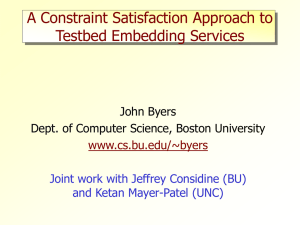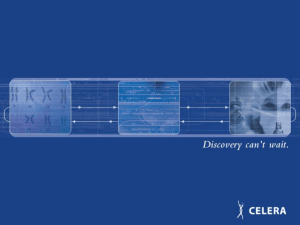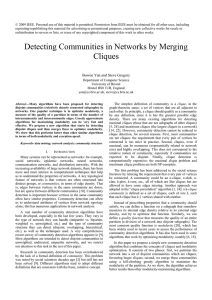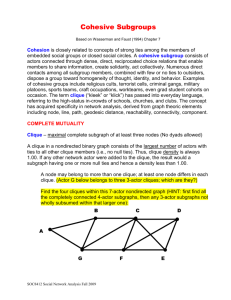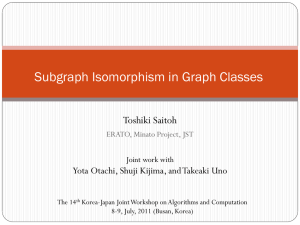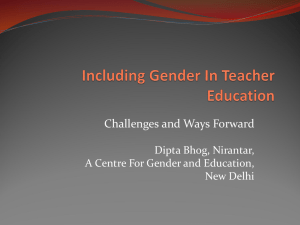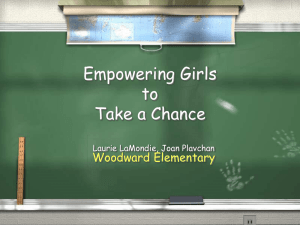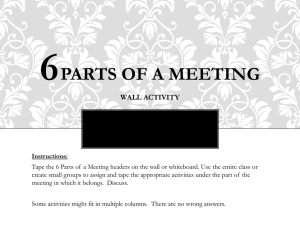Middle School Cliques Presentation : Program
advertisement
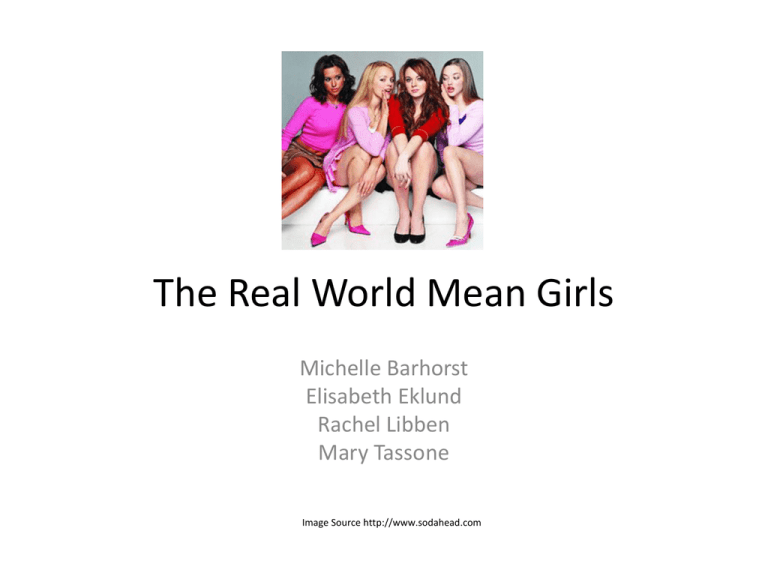
The Real World Mean Girls Michelle Barhorst Elisabeth Eklund Rachel Libben Mary Tassone Image Source http://www.sodahead.com Clique Facts • Clique - a narrow exclusive circle or group of persons (Merriam-Webster) • Cliques affect both boys and girls • Cliques are self-reinforcing • Cliques can start as early as kindergarten (Sources: Wiseman, 2009) Image Source: http://www.bloggernoob.com/bloggingcliques/06/ Research has shown… • Daily interactions with peers play a major role in teen identity formation. • Peer rejection in childhood and adolescence have been associated with a heightened risk for depressed mood. • Children who are isolated from cliques may not have positive group experiences and therefore may be at risk for making their depressive symptoms worse. • Prevention efforts could help children to reduce depressive symptoms. (Sources: Kinney, 1993; Witvliet et al., 2010) Image Source http://school.familyeducation.com The Meaning of Meanness: Popularity, Competition, and Conflict among Junior High School Girls • Study explored the meaning of meanness in junior high school in order to better understand the connections between female competition, conflict, and popularity. • A three-year longitudinal study of junior high school. Two ethnographers interviewed and observed students. • Students were asked to explain how they perceived and experienced the world. (Source : Merton, 1997) Meaning of Meanness Continued… • The students in this school defined the term “mean” as acts of commission and omission whose intent was to hurt someone emotionally. • Most of the clique’s meanness was directed at its own members, so most outsiders thought it would be nice to be friends with the members. Therefore, the clique’s popularity was protected • Meanness is an action to express and preserve popularity. Meanness provided a way for students to express and experience personal power. Therefore, meanness has a hierarchical position. (Source: Merton, 1997) Image Source: http://polishedinpink.onsugar.com/Very-Steps-Girls-Coach-Tyler-Flats-12685300 Research Suggests… • It’s important for students in middle school to be involved in extracurriculars so they can interact with peers with similar interests • Break down barriers between cliques that are active in the school. Retreats, workshops, team-work challenges • Work to develop social skills in the entire middle school population so that all students can relate better (Source: Batiuk, Boland & Wilcox, 2004; Kinney, 1993) Challenge Day If You Really Knew Me Image Source: spartanyouthradio1.libsyn.com If You Really Knew Me: Ep. 8 Columbia High School • Challenge Day came to school with the goal to “break down cliques and see human beings inside” • Challenge Day Starts with ice breakers to get the students energized, moving, and interacting with one another • Facilitators then talked about importance of not living life inside a little box and how to give real hugs • Game to collect as many real hugs as possible (Source: Coyne, P., Day, A., & Shapiro, A., 2010) …If You Really Knew Me Ep. 8 • Students broke into small groups and shared that “If you really knew me, you would know that…” and discussed home lives • Power Shuffle Activity • Individuals took microphone to plan how to move forward as a school & what they will personally change • Mix It Up at lunch the next day (Source: Coyne, P., Day, A., & Shapiro, A., 2010) Image Source: http://www.challengeday.org/photo-gallery.php Strategies to Break Down Cliques • Mix It Up Day Image Source: bhsbloggers.blogspot.com/2010_11_07_archive.html Mix It Up Day • Created in 2002 by Study Circles Resource Center and Teaching Tolerance Project, practiced by millions annually • Goal is to help young people cross social boundaries and improve relations • Most effective when combined with classroom discussions before and follow-up discussions • More successful when students were involved in planning and facilitating Image Source: mado.web.unc.edu (Source: Nagda, B. A., McCoy, M. L., & Barrett, M, 2006) What did Students Say? • Based on student survey results: • Students were more aware of social boundaries and social climates • Students got to know more students • Students became more aware of how cliques were hurtful and their role in how to break down social boundaries • Students of color especially felt that their views were heard during the discussions Image Source: ashevillecityschools.net (Source: Nagda, B. A., McCoy, M. L., & Barrett, M, 2006) Classroom Activities • Ask classroom if there are any issues with cliques; usually there will be reluctance to discuss, so have students break out across classroom and answer anonymously, then read responses aloud to class • Make lists for girls and boys of characteristics that are considered cool and uncool; record them inside and outside of a box • Have students draw a clique map of school common areas and lunchroom and discuss (Source: Wiseman, 2009) Example of “Mean Girls” Map: Image Source: lindsayelise0527.blogspot.com Classroom Activities • Make a list of how you feel when gossiping and how you feel when gossiped about; compare the lists and decide who you would rather be (Source: Karres, 2010) Image Source: www.writerscafe.org Resources • • • • • • • • Batiuk, M.E., Boland, J.A., Wilcox, N. (2004). Project trust: Breaking down barriers between middle school children. Adolescence, 39 (155), 531-539. Coyne, P., Day, A., & Shapiro, A.(Producer). (2010, September 10). Columbia High School [Television Series Episode]. If You Really Knew Me. Los Angeles: MTV. Farmer, T. W. (2000). From nerds to normals: The recovery of identity among adolescents from middle school to high school. Journal of Educational and Psychological Consultation, 11(3), 299-321. Kinney, D. A. (1993). From nerds to normals: The recovery of identity among adolescents from middle school to high school. Sociology of Education, 66(1), 21-40. Merten, D. (1997). The meaning of meanness: popularity, competition, and conflict among junior high school girls . Sociology of Education, 70(3), 175-191. Nagda, B. A., McCoy, M. L., & Barrett, M. (2006). Mix it up: Crossing social boundaries as a pathway to youth civic engagement. National Civic Review, 95(1), 47-56. doi:10.1002/ncr.131 Wiseman, R. (2009). Queen Bees & Wannabees (2nd ed.). New York: Three Rivers Press. Witvliet , M., Brendgen, M., Van Lier, P., Koot, H., & Vitaro, F. (2010). Early adolescent depressive symptoms: Prediction from clique isolation, loneliness, and perceived social acceptance. J Abnorm Child Psychology, 38(8), 1045-1056.

